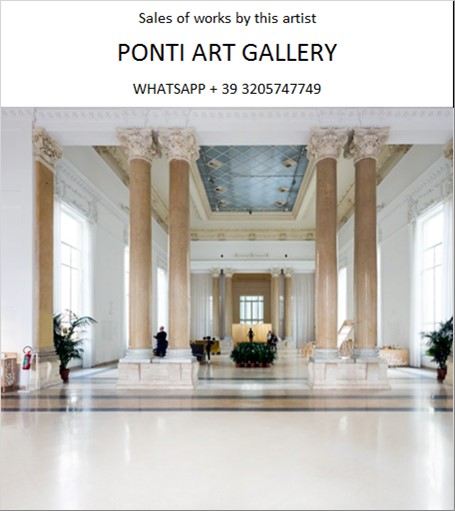Ponti Art Gallery is interested in buying and selling works
of art by this artist.

Georg Schrimpf Biography
Georg Schrimpf, born on February 13, 1889, in Munich, Germany, emerged as a pivotal figure in the art movement known as Neue Sachlichkeit (New Objectivity), which flourished in Weimar Germany from 1919 to 1933. This movement, developing as an outgrowth of Expressionism, sought to capture the reality of the Weimar Republic era with a new level of honesty and directness. Schrimpf, alongside contemporaries such as Otto Dix, George Grosz, and Christian Schad, became widely recognized for his contributions to this movement. His work, however, was not without controversy; the National Socialist government of the 1930s deemed him a producer of "Degenerate Art," leading to the removal of his works from German museums.
Schrimpf's early life was marked by hardship and a relentless pursuit of his artistic passion. Following the death of his father before his birth, Schrimpf faced a challenging upbringing. His stepfather later forced him to leave home, pushing him into an apprenticeship as a baker in Passau in 1902. Despite these early challenges, Schrimpf's inclination towards art was undeniable. From 1905 to 1914, he traveled extensively through Belgium, France, Switzerland, and Northern Italy, working in various capacities such as a waiter, baker, and coal shoveler. It was during this period, in 1913, that he lived in an anarchist colony in Switzerland, forming a significant friendship with Oskar Maria Graf, a fellow baker who would later gain fame as a novelist.
Schrimpf's artistic journey was largely self-taught, driven by an insatiable desire to draw, paint, and carve. His move to Berlin in 1915 marked a turning point in his career. Despite working in a chocolate factory, he dedicated every spare moment to his art, eventually catching the attention of Herwarth Walden, a renowned publicist and art expert. Walden's gallery, Der Sturm, hosted Schrimpf's first exhibition in 1916, showcasing his paintings and woodcarvings to much acclaim. This period also saw Schrimpf's marriage to Maria Uhden, a fellow painter and graphic artist, in 1917. Their union, however, was short-lived, as Uhden passed away in 1918 due to complications from childbirth.
Throughout the 1920s, Schrimpf's work gained recognition for its distinctive style, characterized by clean outlines, tender coloring, and a profound sense of stillness. His art often depicted women and landscapes, imbued with a timeless, poetic realism. This style was influenced by his admiration for Renaissance art and his interactions with the Valori Plastici group, particularly Felice Casorati. Schrimpf's friendship with Carlo Carrà, who wrote a biography about him in 1924, further solidified his approach towards a more romantic trend within the New Objectivity movement.
Despite his leftist political views, Schrimpf's work remained apolitical, focusing instead on the beauty of everyday life and nature. His landscapes and portraits of women, devoid of the bustling city life or social critique, offered a serene escape from the tumultuous reality of the time. Schrimpf's contributions to the art world were not limited to his paintings; he also played an active role in the Munich Räterepublik (Bavarian Soviet Republic) and briefly joined the Communist Party of Germany.
In 1933, Schrimpf was appointed as a professor at the Westenriede-Gewerbeschule in Berlin-Schönberg, a position he held until his dismissal in 1937 due to his "red past." The Nazi regime's crackdown on his work culminated in his inclusion in the infamous Degenerate Art Exhibition in 1937. Despite these challenges, Schrimpf continued to create art that resonated with a sense of tranquility and harmony. His legacy, marked by a unique blend of realism, expressionism, and a touch of romanticism, remains a testament to his enduring impact on the art world. Georg Schrimpf passed away on April 19, 1938, in Berlin, leaving behind a body of work that continues to captivate and inspire.
Georg Schrimpf Quotes and
Sales of Works
Ponti Art Gallery selects and deals with paintings by the
artist. Upon request, we provide free estimates and
evaluations, communicate prices, quotations, and current
market values.
If you are interested in BUYING or SELLING works by the
artist, contact us immediately.
If you wish to sell or receive an evaluation of the
works:
Send us a frontal photo of the painting, one of the back,
and one of the signature. Also, indicate the dimensions of
the work. Inform us about the purchase origin of the work
and any kind of available documentation (purchase
receipts, certificates of authenticity, publications). One
of our operators will respond to you on the same day. We
guarantee maximum confidentiality and extreme
professionalism.
If you wish to purchase works by the painter: Contact us
and let us know your request. We will inform you about the
available works. We also offer the possibility to
subscribe to our NEWSLETTER, through which you will be
informed at the beginning of each month about the latest
acquisitions of the art gallery.
You can send us pictures of the work:
